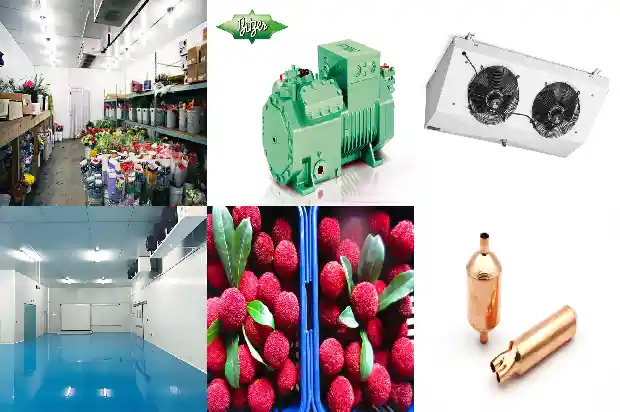Safety Regulations for Ammonia Refrigeration Machine Room
2024-09-29
Safety regulations for ammonia refrigeration machine rooms:
- Operators should abide by operating procedures and are not allowed to operate alone.
- At the exit of the ammonia compressor room, an emergency switch for the main power supply should be installed as required for emergency power cut-off in case of a large amount of ammonia leakage accident. An alarm signal for calling for help should be set up in the machine room as required.
- No open flames are allowed in the machine room and auxiliary equipment workshops.
- The ammonia machine room and workshops with ammonia should be equipped with exhaust equipment to maintain fresh indoor air and meet the exhaust needs in case of an accident. And fire water facilities should be provided.
- Complete safety protection appliances (ammonia-proof masks, oxygen respirators, rubber gloves, anti-virus clothes, rubber shoes and medical rescue supplies, etc.) should be placed in special boxes at the entrances and exits. They should be inspected at least once a year. All operators should master the use and storage methods.
- Rescuers should wear safety protection appliances (articles) correctly before entering the workshop for rescue and ensure good ventilation and flushing dilution measures.
- Operators should be familiar with the physical and chemical properties of ammonia (the physical and chemical properties should be marked separately in a prominent position in the workshop) to improve the ability of self-rescue and protection.
- In case of ammonia poisoning caused by an ammonia leakage accident, the following rescue measures should be taken immediately:
(1). Quickly move the poisoned person to a ventilated, warm and place far away from the scene.
(2).
Immediately rinse the mouth with 2% boric acid water. If the poisoning is serious and the person cannot take care of himself/herself, let him/her inhale the over-warm steam of 1-2% citric acid solution.
(3). If the poisoned person stops breathing, quickly unbutton his/her clothes and perform artificial respiration; Try to change the poisoned person's clothes and do a good job in keeping warm.
(4). Give the poisoned person lemon juice or 3% lactic acid solution.
(5). Keep quiet, warm and inhale oxygen, and seek medical treatment immediately.
(6). If ammonia splashes into the eyes, do not rub.
Open the eyelids and rinse with water or 2% boric acid water, and quickly open and close the eyes. Send to the hospital after the eyes are filled with water.
(7). For the treatment of nose and throat, 2% boric acid water can be dripped into the nose and used for gargling. Drink a large amount of 0.5% citric acid or lemonade.
(8). When the skin is stained with ammonia, immediately rinse with water or 2% boric acid water. The burned skin should be exposed to the air.
Related Articles
- What safety measures should be paid attention to during the installation of cold storage?
- Analysis of Causes for Safety Valve Leakage
- Scheme for the Use and Safety of Ammonia Refrigerants
- Safety Protection in Refrigeration Devices
- How Food Cold Storages Ensure Food Safety
- What are the safety protection norms for refrigeration system in cold storage?
- Where Lie the Key Construction Technologies of the Ammonia Refrigeration System?
- How to Properly Extract Ammonia Refrigerant during Refrigeration Parts Repair
- Which is Better: Ammonia Refrigeration or Fluorine Refrigeration?
- Cooling Operation of Ammonia Refrigerated Cold Storage
- Cost Comparison of Ammonia-to-Fluorine Conversion in Cold Storage Renovation
- What is the difference between ammonia refrigeration and fluorine refrigeration?
- Have You Encountered the Three Common Problems of Refrigeration Compressors?
- How to Calculate Refrigeration Load? And What Are the Issues?
- What to Do if the Compressor of a Frozen and Refrigerated Display Cabinet Runs but the Refrigeration Effect Is Poor?
- Instructions for Welding and Drainage in the Installation of Refrigeration Equipment Pipelines
- Common Pressure Valves and Protection Devices in Refrigeration Units
- Precautions for Using Rotary Refrigeration Compressors
